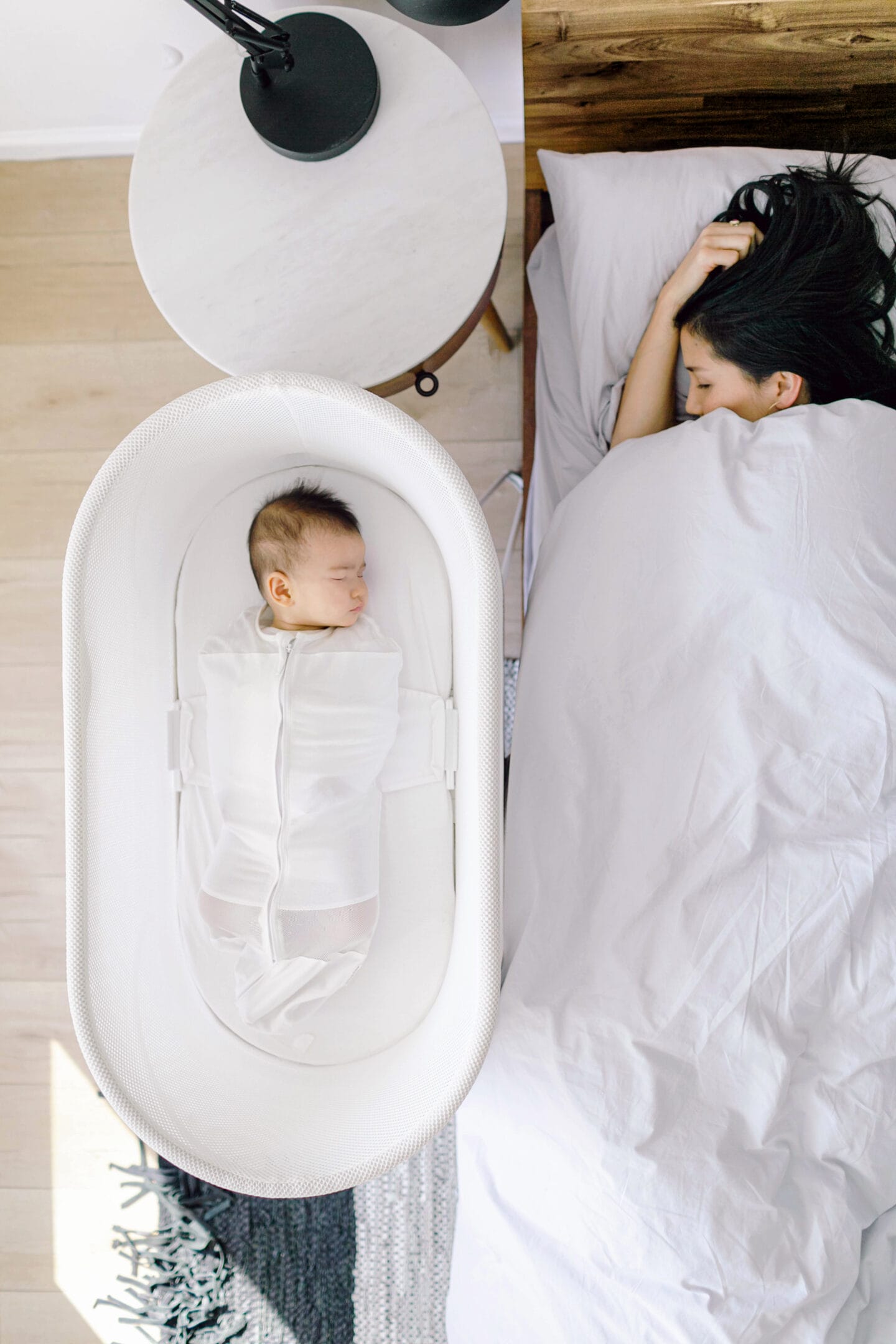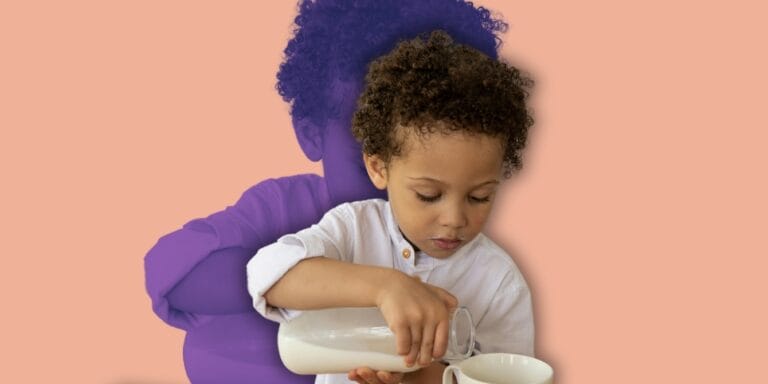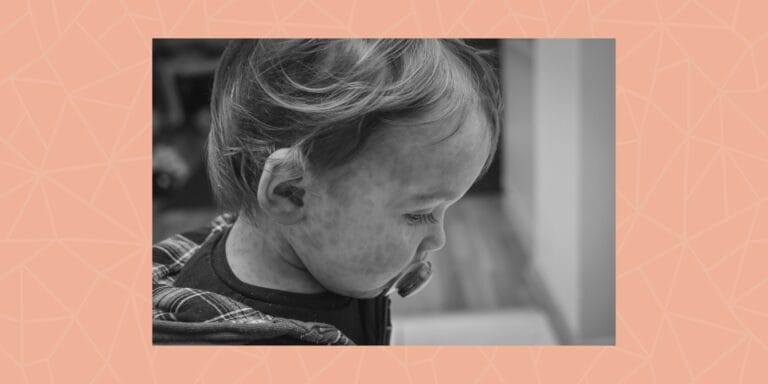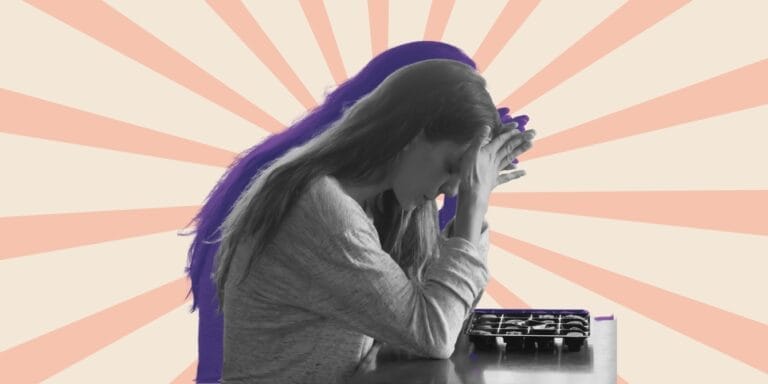SNOO gets FDA approval for keeping sleeping babies on their backs

Happiest Baby, Inc.
Insurance companies could cover the cost of SNOO in the future.
We independently select and share the products we love—and may receive a commission if you choose to buy.
Table of Contents
The Food and Drug Administration (FDA) has authorized the SNOO Smart Sleeper as a medical device—naming it as the first product to effectively keep babies on their back when sleeping. Infants who sleep on their back have a lower risk of death from sudden infant death syndrome (SIDS) and sudden unexpected infant death (SUID).
Back sleeping is “the single most effective action that parents and caregivers can take to lower a baby’s risk of SIDS,” states the National Institutes of Health. Back sleeping for babies is a key safe sleep recommendation of the American Academy of Pediatrics. And, the CDC asserts that “babies who sleep on their backs are much less likely to die of SIDS than babies who sleep on their sides or stomachs.”
SNOO is recommended for babies to use until they can roll consistently (meaning they have rolled from stomach to back—multiple times—during sleep). In a study of 1,012 infants, SNOO was found to reduce unsafe stomach sleeping by 91.5%. However, SNOO has not directly demonstrated a reduction in the incidence of SIDS/SUID.
Even with the success of the Back to Sleep campaign and increased safety guidelines around infant sleep, SIDS and SUID remain the leading causes of infant death in the US, claiming 3,500 lives each year.
“As a pediatrician for over 40 years, I’ve witnessed far too many times the unbearable pain of parents who placed their baby in bed at night, only to find them lifeless in the morning,” said Dr. Harvey Karp, who co-founded Happiest Baby, Inc. with Nina Montée Karp. “Stomach sleeping leads to the tragic death of thousands of healthy infants every year. Yet, we routinely put babies in bed totally unsecured for 12 to 14 hours every day.”
Almost two-thirds of SIDS/SUID fatalities occur when a baby is not safely sleeping on their back.
“Just as infant seats dramatically improve car safety, we hope to dramatically improve sleep safety by keeping babies on the back and reducing risky rolling,” Dr. Karp said.

What is SIDS?
SIDS is the unexplained death of a seemingly healthy infant under 1 year of age, typically occurring while the child is sleeping. Researchers have identified certain risk factors that may contribute to why some infants are more susceptible to SIDS, including environmental and developmental factors. Most SIDS deaths occur between age 2 months and 4 months, and 90% occur before age 6 months.
A significant contributor to SIDS is when babies are placed down for sleep on their stomachs, or when they roll over to a stomach-sleeping position and can’t roll back onto their backs. That spontaneous rolling onto their stomach can increase the risk of SIDS and SUID by 13-fold.
Related: New research highlights a potential reason why some babies die of SIDS
How the SNOO works to keep babies on their backs
The SNOO is a smart bassinet that, when used together with the SNOO Sleep Sack, ensures safe positioning for sleeping infants by preventing them from spontaneously rolling to a stomach-sleeping position. The FDA has identified SNOO as an “infant supine sleep system.”
Dr. Karp tells Motherly that the SNOO Sleep Sack pairs an award-winning sack with special looped “wings” that slide onto a special safety clip system. “That keeps babies snugly swaddled and securely fastened on the back bed. Once swaddled and clipped in, babies can move their head to the right and left and move their legs and lift their shoulders, but they cannot flip over. This gives babies all the benefit of swaddling [less crying and more sleep] without the risks.”
SNOO also helps infants—and parents—sleep more soundly
SNOO has been shown in a study run by Happiest Baby to add an hour or more to an infant’s nighttime sleep by providing gentle rocking and white noise to mimic womb-like sounds, and can respond to an infant’s fussing and crying by increasing motion and sound to soothe an upset baby.
SNOO’s functions are based on Dr. Karp’s approach to infant calming, incorporating the swaddle, shush, and swing actions as described in his now-classic book, The Happiest Baby on the Block.
Related: Is the SNOO worth it?
The AAP recently released an updated set of infant safe sleep guidelines, which include recommendations such as:
- Babies should be placed on their back for every sleep by every caregiver until they reach 1 year of age
- Babies should sleep in a crib, bassinet, portable crib or play yard on a flat, non-inclined sleep surface with a firm, tightly fitting mattress
- Babies should sleep in the parents’ room, close to the parents’ bed but on a separate surface designed for infants, ideally for at least the first six months.
SNOO meets current safe-sleep guidelines by encouraging room-sharing for the first year of life, discouraging co-sleeping and ensuring infants are always placed down for sleep on their backs on a flat surface while preventing them from rolling over.
Currently available for purchase or rental, the device is used in more than 140 hospitals across the country to support full-term and premature infants while also supporting new mothers after birth and reducing the burden on nurses to care for infants. A survey run by Happiest Baby on 204 nurses found that each SNOO saves nurses an average of 4 to 5 hours per day.
Related: Dr. Harvey Karp’s secrets for sleep training toddlers
Does the SNOO FDA approval mean SNOO will be covered by insurance?
Classifying the SNOO as a medical device could mean that, yes, insurance companies may cover the cost of the smart bassinet in the near future, making it more accessible to more families, though that’s unlikely to happen right away. In the meantime, it’s worth checking with your employer to see if they offer SNOO rentals as part of a wellness benefits package.
In the future, Dr. Karp hopes that 6-month SNOO rentals will be free. “Our ultimate goal is for all families to get a free SNOO rental for the first 6 months of their baby’s life. Over the next 1 to 2 years, we hope insurance companies will begin to offer free or discounted SNOOs… just like they offer free breast pumps,” Dr. Karp tells Motherly. “With SNOO, babies and parents can sleep better.”
SNOO can be purchased for $1695 or rented for $159/month.
About FDA's Medical Devices Program
The FDA’s Medical Devices Program provides patients and health care providers with timely access to medical devices that have the potential to be lifesaving or make important improvements in health outcomes. The agency enforces high statutory standards for premarket approval, 510(k) clearance, and de novo marketing authorization, consistent with the agency’s mission to protect and promote public health.
A version of this story was originally published on April 3, 2023. It has been updated.




































